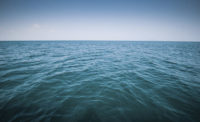Another mission needed to recover El Faro’s data recorder

They know where it is, but getting to it is another matter. The investigative team that located the El Faro’s voyage data recorder (VDR) last week says it will take another mission to actually recover the device. Video and photographic images show that the VDR appears to remain attached to a steel beam connected to the mast structure of the sunken cargo ship, which rests on the ocean’s floor in the Bahamas.
“Now that we have been able to see just how the VDR is oriented relative to the mast structure, it’s clear that we’re going to need specialized deep-water salvage recovery equipment in order to bring it up,” said Brian Curtis, Acting Director of the National Transportation Safety Board (NTSB) Office of Marine Safety. “Extracting a recorder capsule attached to a four-ton mast under 15,000 feet of water presents formidable challenges, but we’re going to do everything that is technically feasible to get that recorder into our lab.”
The NTSB hopes to launch the retrieval mission within the next few months. In the meantime, though, the current mission will continue to gather imagery of the El Faro hull and debris field until May 5th.
The long investigative odyssey surrounding the doomed cargo ship began with an initial search mission by the NTSB in October and November of 2015, during which an initial survey of the debris field was conducted. The data collected on that trip was used by investigators to plot “high probability” search zones – a strategy that proved successful in eventually locating the mast and VDR.
For more information about the NTSB’s investigation of the loss of the El Faro, please visit http://go.usa.gov/cuDfV.
Looking for a reprint of this article?
From high-res PDFs to custom plaques, order your copy today!






